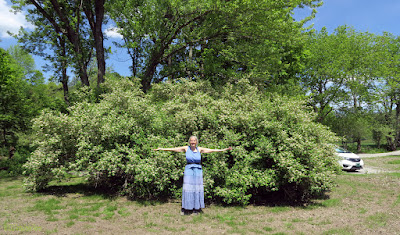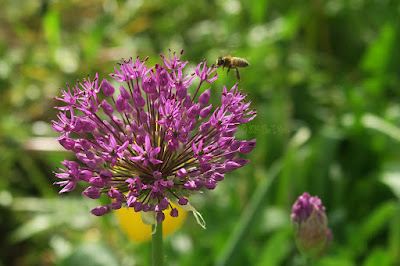Thursday, May 23, 2024
Honeysuckle
Painted Turtles On World Turtle Day
Duckweed, or water lens, are flowering aquatic plants which float on or just beneath the surface of still or slow-moving bodies of fresh water and wetlands. Also known as "bayroot", Duckweed is an important high-protein food source for waterfowl and also is eaten by humans in some parts of Southeast Asia. The tiny plants provide cover for many aquatic species. Duckweed is being touted as a miracle plant for many reasons including: Cost effective renewable energy, biofuel Water filter, Mosquito prevention, Prevents algae growth, Reduces evaporation on bodies of water, Virtually free animal feed, Food for humans.
Sunday, May 19, 2024
World Bee Day!
Tips to help save the bees:
Plant diverse types of flowers in your landscape. Make sure you have something in bloom from April through the hard freezes of early November. The most critical time for bees is early spring.
Avoid purchasing plants that may have been treated with insecticides which could harm bees and other insects when they collect the plant’s nectar or pollen. Purchase plants that are labeled as neonicotinoid-free or better yet, GO ORGANIC.
Orange-belted Bumblebee
on ground ivy, also known as creeping charlie. Bombus ternarius, or tricolored bumblebee, is a yellow, orange and black bumblebee. It is a ground-nesting social insect whose colony cycle lasts only one season, common throughout the northeastern United States and much of Canada.
THANKS FOR YOUR VISITS, FAVS AND COMMENTS. AS ALWAYS, APPRECIATED VERY MUCH!© ALL RIGHTS RESERVED BY ELISE T. MARKS. PLEASE DO NOT USE THIS IMAGE ON WEBSITES, BLOGS OR ANY OTHER MEDIA WITHOUT MY EXPLICIT WRITTEN PERMISSION.MY PHOTOGRAPHS ARE AVAILABLE FOR PURCHASE
MY PHOTOGRAPHS ARE AVAILABLE FOR PURCHASE
Saturday, May 18, 2024
Enjoying Spring In Vermont
Thank you Ashley Jones for taking this photo.
THANKS FOR YOUR VISITS, FAVS AND COMMENTS. AS ALWAYS, APPRECIATED VERY MUCH!© ALL RIGHTS RESERVED BY ELISE T. MARKS. PLEASE DO NOT USE THIS IMAGE ON WEBSITES, BLOGS OR ANY OTHER MEDIA WITHOUT MY EXPLICIT WRITTEN PERMISSION.
Thursday, May 16, 2024
Arugula Flowers
Who knew Arugula flower are so cool looking!
THANKS FOR YOUR VISITS, FAVS AND COMMENTS. AS ALWAYS, APPRECIATED VERY MUCH!© ALL RIGHTS RESERVED BY ELISE T. MARKS. PLEASE DO NOT USE THIS IMAGE ON WEBSITES, BLOGS OR ANY OTHER MEDIA WITHOUT MY EXPLICIT WRITTEN PERMISSION.MY PHOTOGRAPHS ARE AVAILABLE FOR PURCHASE THROUGH ELISECREATIONS.NET
MY PHOTOGRAPHS ARE AVAILABLE FOR PURCHASE THROUGH ELISECREATIONS.NET
Monday, May 13, 2024
Columbine
Monday, April 29, 2024
Squills
also known as Puschkinia scilloides, or Lebanon squill, is a perennial bulb that originated in Asia Minor, Lebanon, and the Caucasus. A member of the Asparagaceae (asparagus family), this small relative of the hyacinth also blooms in spring.
THANKS FOR YOUR VISITS, FAVS AND COMMENTS. AS ALWAYS, APPRECIATED VERY MUCH!© ALL RIGHTS RESERVED BY ELISE T. MARKS. PLEASE DO NOT USE THIS IMAGE ON WEBSITES, BLOGS OR ANY OTHER MEDIA WITHOUT MY EXPLICIT WRITTEN PERMISSION.MY PHOTOGRAPHS ARE AVAILABLE FOR PURCHASE THROUGH ELISECREATIONS.NET
MY PHOTOGRAPHS ARE AVAILABLE FOR PURCHASE THROUGH ELISECREATIONS.NET





















































